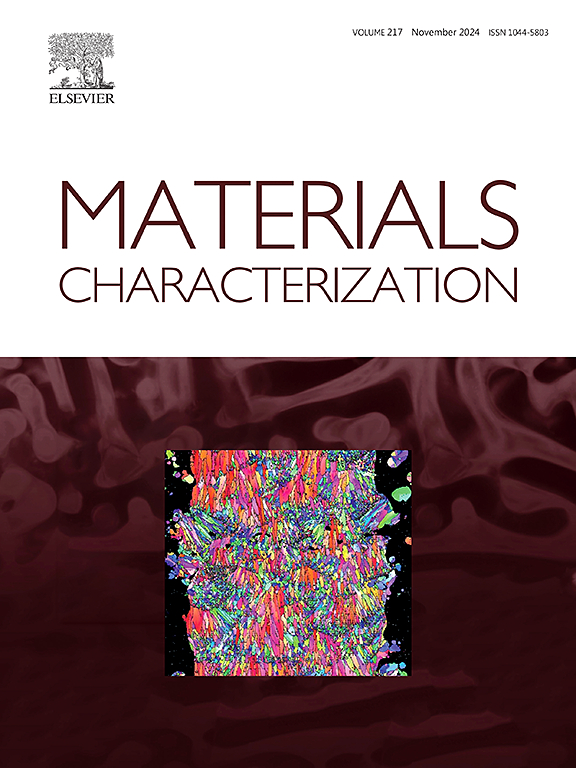Effect of heat treatment on microstructural evolution and mechanical properties of eutectic Al-6Mg2Si alloy processed by laser powder bed fusion
IF 4.8
2区 材料科学
Q1 MATERIALS SCIENCE, CHARACTERIZATION & TESTING
引用次数: 0
Abstract
It is critical to tailor specific schemes of heat treatment for alloys manufactured by laser powder bed fusion (L-PBF) according to their typical microstructural characteristics. In this study, systematic investigation was carried out to understand the influence of direct ageing (DA), annealing treatment (AT), and solution ageing treatment (SAT) on the microstructural evolution and mechanical properties of a L-PBFed Al-6Mg2Si alloy. The results demonstrated that the hierarchical microstructure of the L-PBFed Al-6Mg2Si alloy mainly consists of fine α-Al grains, Al/Mg2Si eutectic cellular structures, solute atoms, and high-density dislocations, providing yield strength (YS) of 363 MPa, ultimate tensile strength (UTS) of 436 MPa, and elongation (El) of 9.3 %. Under DA condition, the Al/Mg2Si cellular structure was preserved, promoting the precipitation of fine β'′ precipitates. The DA sample exhibited significant improvements (compared to L-PBFed sample) in mechanical properties, with YS, UTS, and El of 420 MPa, 496 MPa, and 9.5 %, respectively. In contrast, the eutectic Al/Mg2Si cellular structure was completely disappeared and subsequently transformed to coarsened Mg2Si particles after AT and SAT, resulting in decrease in strength. Direct ageing is a suitable heat treatment process to acquire a good strength-ductility synergy of the L-PBFed Al-Mg2Si alloy.
求助全文
约1分钟内获得全文
求助全文
来源期刊

Materials Characterization
工程技术-材料科学:表征与测试
CiteScore
7.60
自引率
8.50%
发文量
746
审稿时长
36 days
期刊介绍:
Materials Characterization features original articles and state-of-the-art reviews on theoretical and practical aspects of the structure and behaviour of materials.
The Journal focuses on all characterization techniques, including all forms of microscopy (light, electron, acoustic, etc.,) and analysis (especially microanalysis and surface analytical techniques). Developments in both this wide range of techniques and their application to the quantification of the microstructure of materials are essential facets of the Journal.
The Journal provides the Materials Scientist/Engineer with up-to-date information on many types of materials with an underlying theme of explaining the behavior of materials using novel approaches. Materials covered by the journal include:
Metals & Alloys
Ceramics
Nanomaterials
Biomedical materials
Optical materials
Composites
Natural Materials.
 求助内容:
求助内容: 应助结果提醒方式:
应助结果提醒方式:


